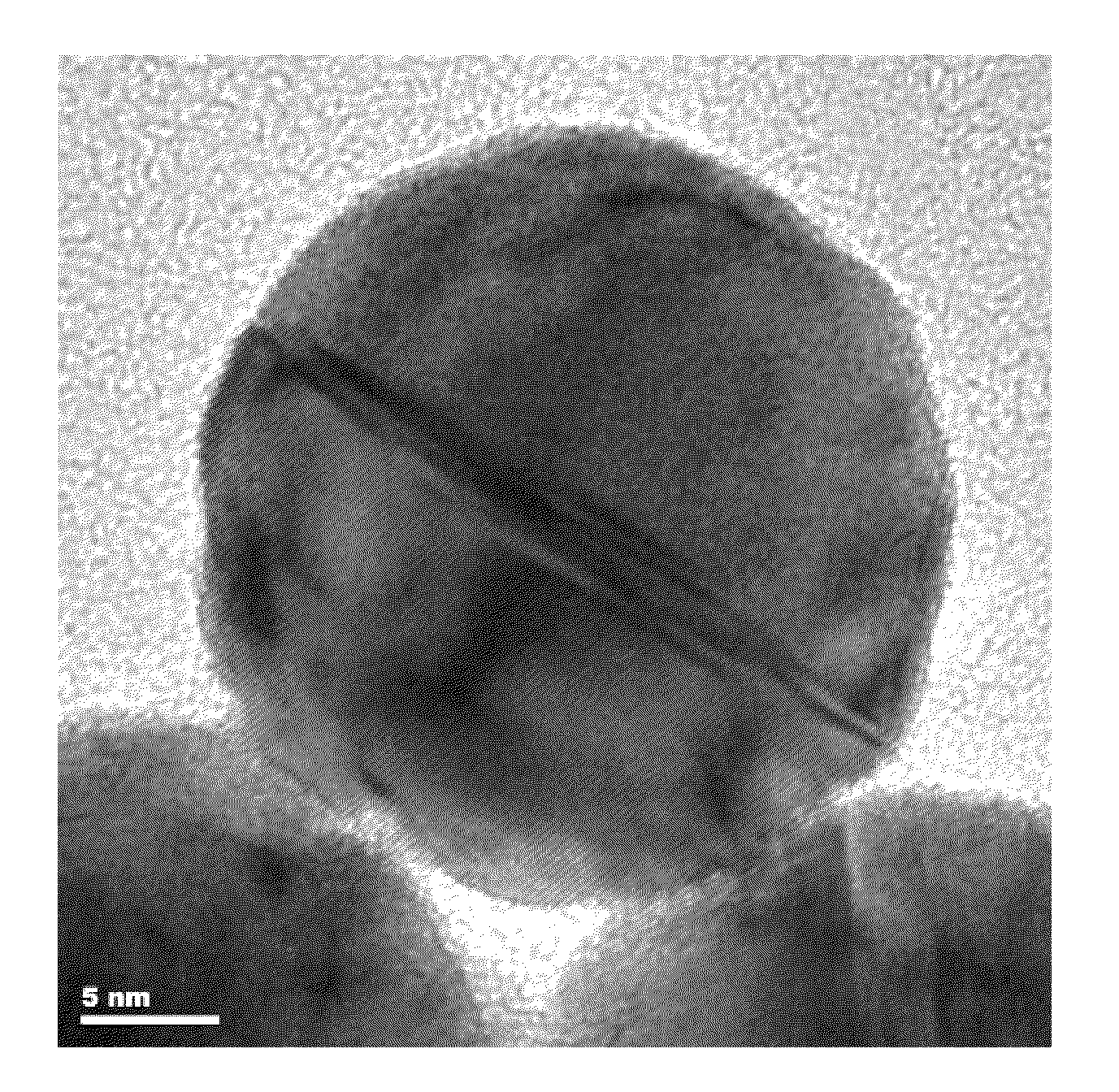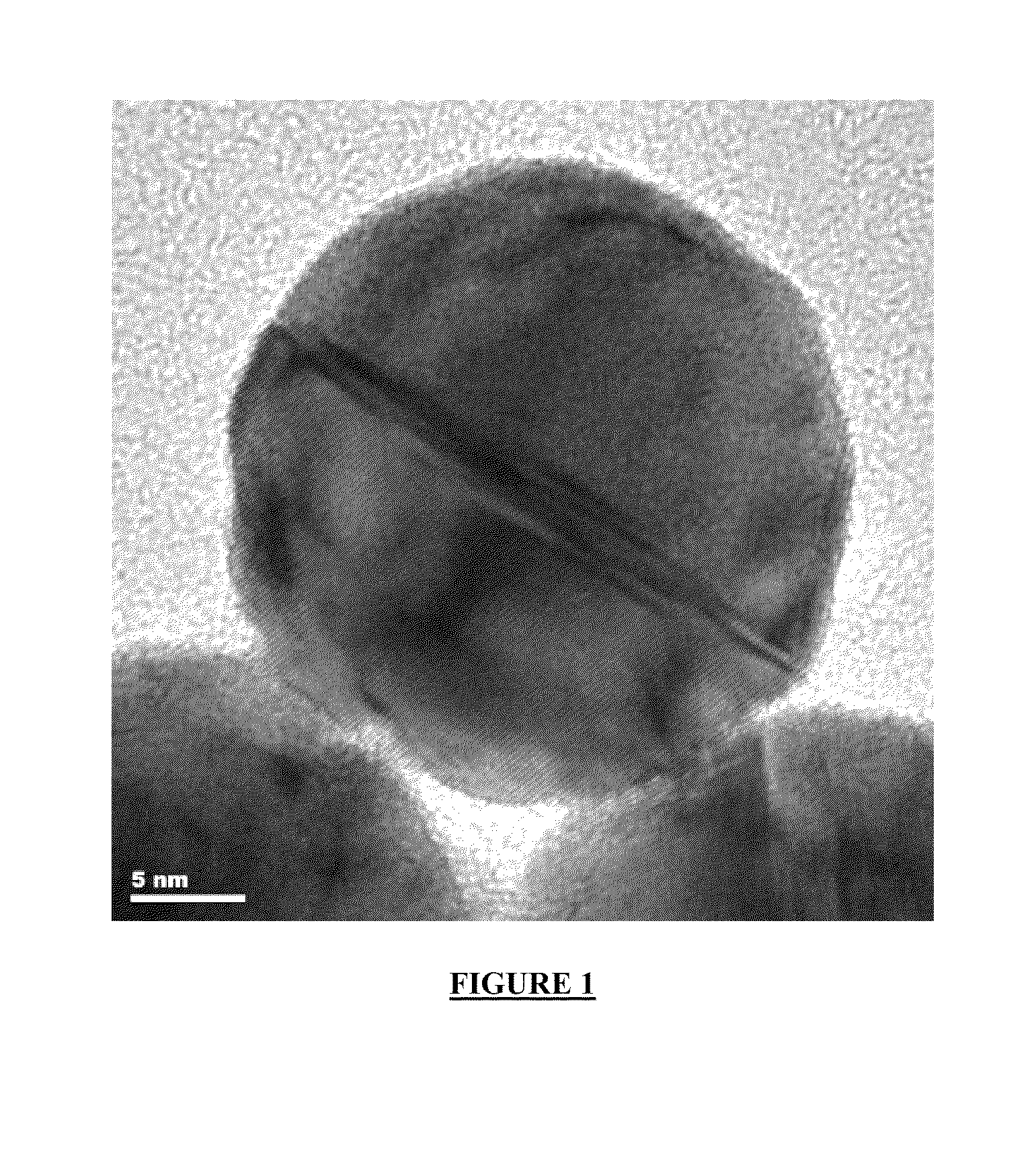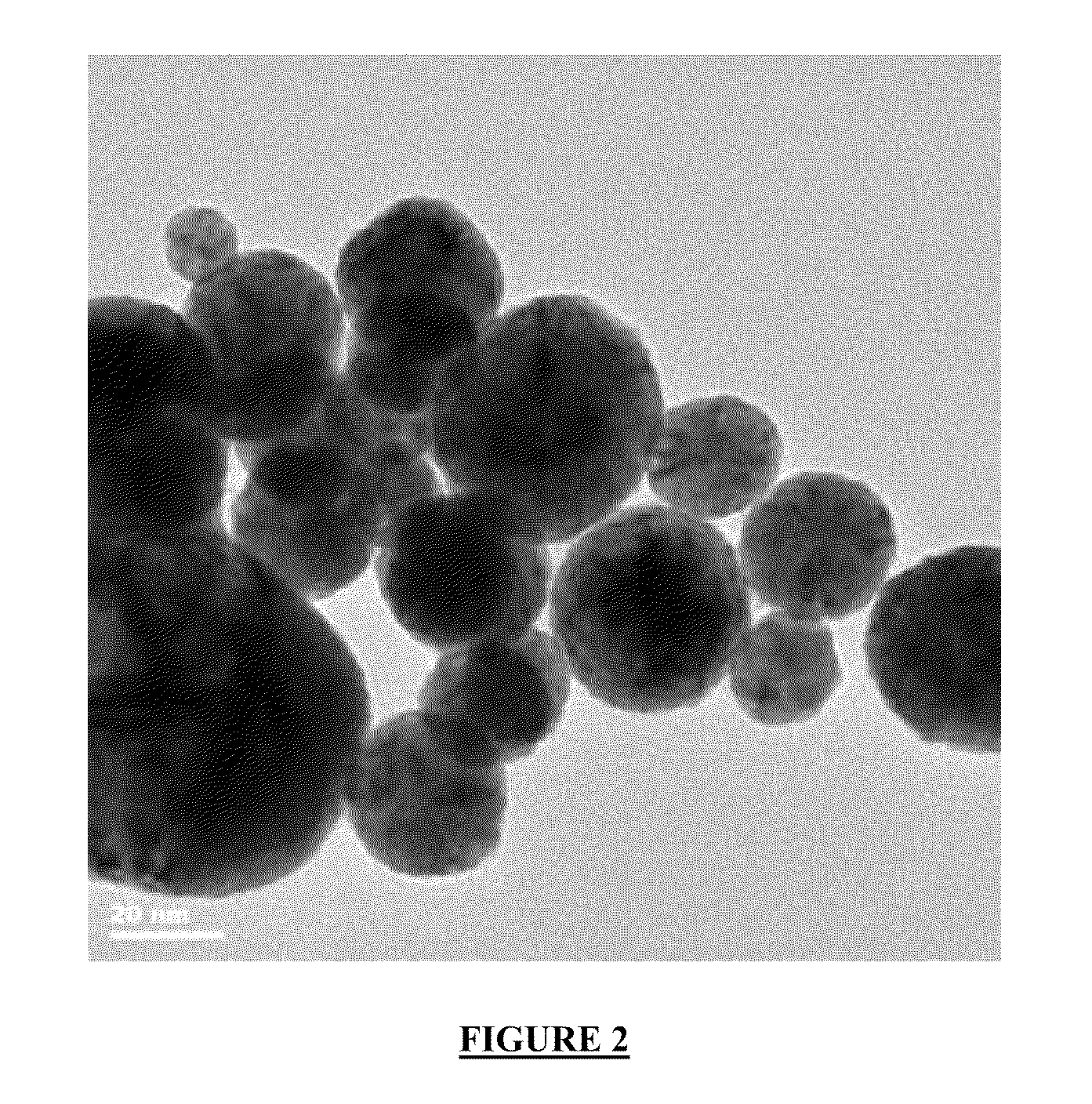Core/shell-type catalyst particles and methods for their preparation
a catalyst particle and core/shell technology, applied in the direction of metal/metal-oxide/metal-hydroxide catalysts, electrical equipment, basic electric elements, etc., can solve the problems of 40 mv loss in cell voltage, not meeting stringent automotive cost requirements, and catalyst costs of $18/kw, etc., to achieve high specific mass activity, low precious metal content, and high durability
- Summary
- Abstract
- Description
- Claims
- Application Information
AI Technical Summary
Benefits of technology
Problems solved by technology
Method used
Image
Examples
example 1
a) Preparation of Ag Core-Particles
[0065]19.85 g of polysaccharide gum (Merck) are dispersed in 400 ml of deionised water for 1 hour. Next, 11.03 g of sodium hydroxide and 31.25 g silver nitrate (m=169.87 g / mol) are individually dissolved in 50 ml of deionised water. Both solutions are continuously added to the solution of the gum at room temperature within 1 hour. After the addition is completed, the solution is heated to 70° C. for one hour. A silver nanoparticle solution containing 19.8 g Ag is obtained. The diameter of the silver particles is about 20 nm (by TEM).
b) Preparation of the Pt Shell on the Ag Core Particles
[0066]20.1 ml of the Ag nanoparticle solution prepared in Example 1a) are diluted with 500 ml of deionised (DI) water. Next 1.95 g of platinum as Hexachloroplatinic acid solution (803 g, 25 wt.-% Pt) are added under intensive stirring. After 10 minutes of mixing, 100 ml of a solution of ascorbic acid (Merck) containing 7.05 g of ascorbic acid are added. The pH of th...
example 2
a) Preparation of Au Core-Particles
[0068]0.204 g gold as a 0.885 g solution of HAuCl4 (23.03% wt. Au, Umicore AG) are rinsed into 500 ml of DI water. Next, 290.56 mg of ascorbic acid are dissolved in 500 ml of DI water. For the preparation of the gold colloids both solutions are rapidly transferred into one single 2,000 ml glass beaker. The gold colloids are formed almost spontaneously. The diameter of the gold nanoparticles is determined by TEM to 25 nm.
b) Preparation of Au / Pt Core / Shell Particles
[0069]The gold sol prepared in Example 2a) is used as starting product (204 mg Au / l). First, 7.5 g of a 25 wt.-% Hexachloroplatinic acid solution (containing 1.88 g Pt) are added under intensive stirring. Next, 27.12 g of ascorbic acid are added. The solution is stirred for 30 min to dissolve the ascorbic acid. Then the pH is adjusted to pH=12 with 10 wt.-% NaOH solution. Finally, the solution is quickly heated to 70° C. to reduce the platinum and to prepare particles with a Pt shell of ab...
example 3
a) Preparation of Ag / Pt Particles Supported on Carbon Black
[0071]20.08 ml of Ag nanoparticles prepared in Example 1a) are diluted in 500 ml of DI water. Next, 1.9508 g of Pt as Hexachloroplatinic acid solution (7.8 g; 25 wt.-%, Umicore AG) are added under intensive stirring. After 10 minutes of mixing, 100 ml of an aqueous solution of ascorbic acid containing 7 g of ascorbic acid are added. Now 6.4 g of dry Ketjen Black EC300J (Akzo Nobel) are added to the solution and stirred for another 20 min to disperse the carbon black. The pH of the solution is increased to pH 12 with 10 wt.-% NaOH. After pH 12 is reached, the reaction is diluted with DI water to yield a final volume of 1,000 ml. Finally the temperature is increased to 70° C. The platinum is reduced by the ascorbic acid and forms a shell around the Ag particles. The resulting core / shell particles are well dispersed and supported on the carbon black to yield a Ag / Pt / C catalyst with about 30 wt.-% metal loading. Particle size me...
PUM
| Property | Measurement | Unit |
|---|---|---|
| diameter | aaaaa | aaaaa |
| diameter | aaaaa | aaaaa |
| voltage | aaaaa | aaaaa |
Abstract
Description
Claims
Application Information
 Login to View More
Login to View More - R&D
- Intellectual Property
- Life Sciences
- Materials
- Tech Scout
- Unparalleled Data Quality
- Higher Quality Content
- 60% Fewer Hallucinations
Browse by: Latest US Patents, China's latest patents, Technical Efficacy Thesaurus, Application Domain, Technology Topic, Popular Technical Reports.
© 2025 PatSnap. All rights reserved.Legal|Privacy policy|Modern Slavery Act Transparency Statement|Sitemap|About US| Contact US: help@patsnap.com



